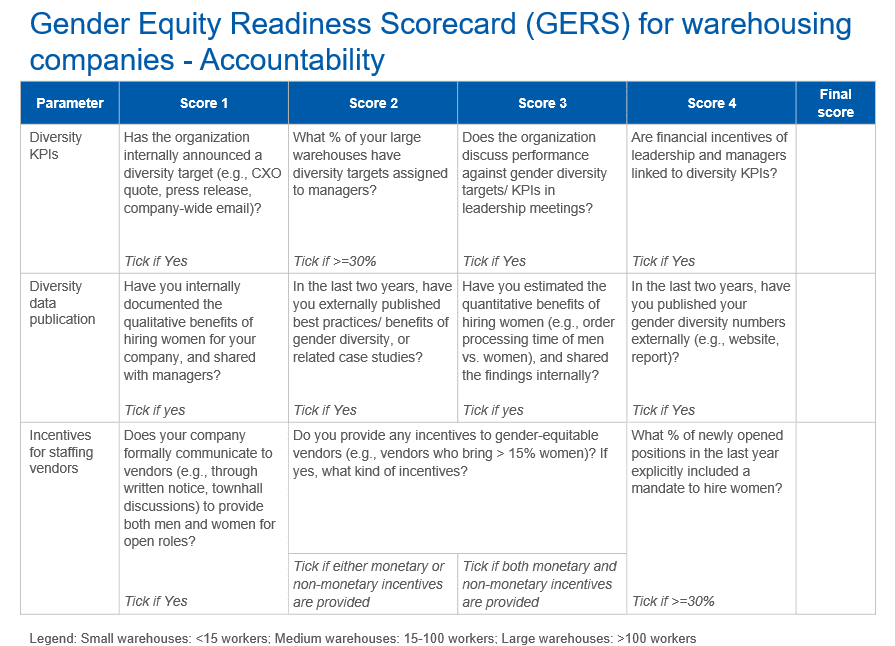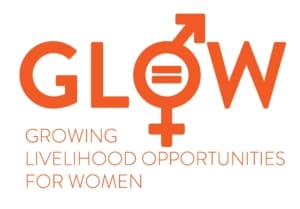Growing Livelihood Opportunities for Women
Tracking Progress on Gender Diversity through GERS - Warehousing
A scorecard to assess warehousing companies on their performance on gender equity in entry-level roles and identify areas of improvement

What is the GERS Scorecard?
The Gender Equity Readiness Scorecard (GERS) is an open-source tool developed by FSG’s GLOW program. The purpose of the GERS is to offer a quick, objective assessment of gender equity within a company.
This tool:
- Is designed to be used by either the companies themselves or independent evaluators
- Is recommended to be used annually/ bi-annually to track progress
- Has been designed to evaluate an entire company, and not just one warehouse in the company
- Does not include scores on parameters mandated by law (e.g., creche facilities, maternity leave)
- Can be used effectively by a medium or large enterprise [1]
What are the criteria for assessing gender equity progress in the GERS?
The Gender Equity Readiness Scorecard (GERS) for warehousing companies evaluates progress on gender equity across four key criteria:
- Outcome criteria focus on women’s representation in the overall workforce, night shifts (for deeper inclusion), and managerial roles (for leadership diversity)
- Infrastructure and support criteria evaluate the overall physical, safety, and policy environment that enables women to work comfortably and productively
- Capability criteria measure efforts to build organizational skills, awareness, and resources to support gender equity
- Accountability criteria look at the company’s commitment to gender equity through targets, tracking mechanisms, incentives, and internal/ external communication
How can warehousing companies and ecosystem players use the GERS to measure their progress?
Warehousing companies can use the GERS tool to:
- Get a clear, objective baseline of the company’s performance on gender equity in entry-level warehousing roles
- Identify the next set of policies and practices they can implement to improve gender equity
- Track the company’s progress over time in becoming more gender-ready, and boosting women’s participation
Ecosystem players (e.g., governments, funders) can leverage the GERS to:
- Nudge companies to prioritize gender equity by incentivizing an annual self-assessment through GERS
- Benchmark companies on their performance on GERS and recognize companies leading the change
- Identify emerging trends (e.g., rise in inclusive hiring) and challenges (e.g., stagnant infrastructure support) related to gender equity
- Use GERS insights to prioritize specific policies, incentives, and programs for improving gender equity in the industry
To access the GERS for warehousing companies, click here >
[1] An enterprise with investment in plant and machinery/equipment exceeding ₹25 crore or annual turnover above ₹100 crore (Source: Ministry of MSME)

